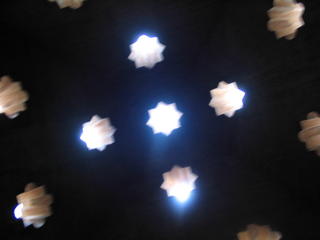El sol andaluz #4: Arab baths
Every time I go to Andalusia, I never missed the Arab baths – be it the historical remnants or the new commercial establishments.

There was a saying in ancient Al-Andaluz that a beggar would rather spend his last cents on soap than on food. Contrary to the period before and after, people of the Muslim Spain loved hygiene. Rich families built elaborated baths at home, while common people frequented public baths which were very popular and numerous at that time.
My first encounter with the ancient Arab baths was in Alhambra. The natural light penetrating through the star-shaped holes at the ceiling captured me and brought me back through centuries to the time when the Nazari rulers relaxed sitting in the resting hall within his baths, with the company of his wives and his musicians playing his favourite melodies.
Another well-preserved ancient Arab baths I visited was in the Alcázar of Jerez de la Frontera. There we can see clearly marked the three bathrooms of a proper Arab bath at that time – starting with the hot-water hall, the temperate water hall, and the cold- water hall. I heard that the one in Jaen is also very well preserved.
But in my encounter with the modern Arab bath in Sevilla, I got to taste how it feels like to dip myself in icy cold water after a hot bath – feeling the omnipresence of every vein under my skin and the blood running through them – similar to but stronger than the dipping after a sauna. That establishment was a fancy one, apart from the traditional three- temperature baths, it was also equipped with separate rooms for the Japanese style jakuchi, Hammam, and aromatic bath after massage.
The Arab bath in Granada that I tried was less sophisticated, or you may say nearer to the original model. But still, Arab baths, massage, and a mint tea and a smoke afterwards have become a ritual of mine that I would never missed whenever there is a chance.
Categories: Culture, Europe, History, Travel

There was a saying in ancient Al-Andaluz that a beggar would rather spend his last cents on soap than on food. Contrary to the period before and after, people of the Muslim Spain loved hygiene. Rich families built elaborated baths at home, while common people frequented public baths which were very popular and numerous at that time.
My first encounter with the ancient Arab baths was in Alhambra. The natural light penetrating through the star-shaped holes at the ceiling captured me and brought me back through centuries to the time when the Nazari rulers relaxed sitting in the resting hall within his baths, with the company of his wives and his musicians playing his favourite melodies.
Another well-preserved ancient Arab baths I visited was in the Alcázar of Jerez de la Frontera. There we can see clearly marked the three bathrooms of a proper Arab bath at that time – starting with the hot-water hall, the temperate water hall, and the cold- water hall. I heard that the one in Jaen is also very well preserved.
But in my encounter with the modern Arab bath in Sevilla, I got to taste how it feels like to dip myself in icy cold water after a hot bath – feeling the omnipresence of every vein under my skin and the blood running through them – similar to but stronger than the dipping after a sauna. That establishment was a fancy one, apart from the traditional three- temperature baths, it was also equipped with separate rooms for the Japanese style jakuchi, Hammam, and aromatic bath after massage.
The Arab bath in Granada that I tried was less sophisticated, or you may say nearer to the original model. But still, Arab baths, massage, and a mint tea and a smoke afterwards have become a ritual of mine that I would never missed whenever there is a chance.
Categories: Culture, Europe, History, Travel

<< Home